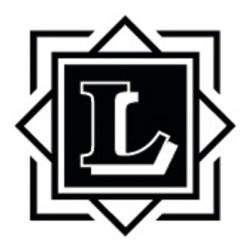Analysis
The claimants were the trustees (‘trustees’) of land at Sandy Lane, Cheam (‘land’) which had been occupied by St Andrew’s (Cheam) Lawn Tennis Club (‘club’) since the execution of a declaration of trust dated 11 July 1938 (‘trust deed’). The club had been established for the purpose of acquiring and fitting out land for use at a tennis club by members of St Andrew’s Cheam United Reformed Church (‘church’). When an opportunity arose to acquire suitable vacant land, a general meeting was called at which it was proposed to spend £750 in the purchase of the land and additional sums for the courts, pavilion and landscaping to a total cost of £1,700. Mr Tweddle, who was the secretary of the church and a member of the club’s committee, offered to purchase the land and rent it to the club. This was agreed and the trustees were authorised on behalf of the club to take a lease of the land for a term of 10 years from 24 June 1938 at an annual rent of £30 with an option to purchase the freehold from Mr Tweddle for £750 (‘lease”). The lease declared that the lessees would hold the demised premises and freehold reversion on trust for sale with power to postpone sale and to hold the net proceeds and the net rents and profits thereof upon the trusts and with and subject to the powers declared by the trust deed. The trust deed declared objects for which the trustees could apply the net proceeds of sale of the land, namely: (a) in payment of any costs and charges incurred in carrying out the trusts, (b) in repayment of any principal money and interest owing upon any charge, (c) in the purchase of a substitute sports ground or as a contribution thereto, (d) in the erection of any building to be used in connection with the church and (e) for any other purpose in connection with the church as may be determined by a majority at a special meeting of its committee of management and the trustees. Before the expiry of the lease an offer was made by Mr Tweddle to sell the land to the club for £525 payable at a rate of £75 per annum for seven years during which period the club could remain in occupation rent free. The trustees accepted this offer by an agreement dated 12 January 1948. Mr Tweddle died on 10 November 1953 and his personal representatives transferred the land to the trustees on 16 May 1955. Over fifty years later the Elders of the church wrote to the trustees asking them to consider a sale for land so as to make the proceeds available for the church to use in extending and refurbishing its buildings so as to improve parochial services provided to its members and the local community. The trustees concluded that they should request the church’s consent to the sell the land. The club then took legal advice as a result of which it challenged the validity of the trust deed and contended that the land was held on a resulting trust for its members. The land was valued at about £1.2 million as of May 2010. The trustees, who were doubtful that either side was correct, sought the guidance of the court in a claim brought under CPR Part 8.
Held
It was trite law that a valid trust must either vest trust property absolutely in ascertainable persons within the perpetuity period or be for exclusively charitable purposes. Unfortunately, it was fairly plain that the trust deed was an attempt to achieve the legally impossible: a perpetual trust for a non-charitable purpose; namely to enable tennis to be played by members of the club. The objects for which the net proceeds of sale could be applied were not limited to charitable purposes and, therefore, the trusts declared therein failed. The church contended that, if the trust deed would otherwise be void, it was validated by the Charitable Trusts (Validation) Act 1954 (‘1954 Act’). This legislation enabled any imperfect trust provision taking effect before 16 December 1952 to be deemed to have had effect as if the declared objects were wholly charitable. However, it was expressly provided that the 1954 Act did not apply to a disposition if, before 16 December 1952, the disposition made for the objects declared by the same imperfect trust provision had been paid, conveyed to or applied for the benefit of the persons entitled by reason of the invalidity of the disposition in question. The club contended that the 1954 Act did not apply because the land was applied by the trustees for the benefit of the club at all times prior to 16 December 1952. As to whether this meant the class of persons whose entitlement arose from the invalidity of the disposition or the persons who had received benefits because of the invalidity of the disposition, the latter construction was to preferred. The purpose of this provision was to prevent the 1954 Act being applied when the imperfect trust provision has already been recognised as being invalid, and the invalidity acted upon. If the trust deed were to be restricted to exclusively charitable purposes, the club would be deprived of the benefit which it was intended to have and had in fact enjoyed since 1938 and, accordingly, the trust deed was not validated by the 1954 Act. The club contended that, if the trust deed was void and not validated by the 1954 Act, there was a resulting trust in favour of the members of the club. However, assuming that the original rules of the club were not materially different from the earliest version submitted in evidence, they prevented the members of the club from dividing the net proceeds of sale of the land between themselves and, it followed therefore, that the disposition fell within the third category in which a gift to an unincorporated association could take effect as identified by Cross J in Neville Estates Ltd v Madden: if the property in question was not to be at the disposal of the members for the time being but to be held in trust for or applied for the purposes of the association as a quasi-corporate entity, it would fail unless the association was a charitable body. The club was not a charitable body and it followed from the failure of the trusts that the land was held on a resulting trust for the estate of Mr Tweddle. The trustees, who had been administering the trust on the assumption that the trust deed was valid, were entitled to relief under s61 of the Trustee Act 1925 in so far as there had been a breach of their duty to the true beneficial owner of the land as they had at all times acted honestly and reasonably and ought fairly to be excused from liability.
JUDGMENT MJ ARNOLD: Introduction [1] This is an unfortunate dispute about the beneficial ownership of land at Sandy Lane, Cheam (‘the land’) which has been occupied by St Andrew’s (Cheam) Lawn Tennis Club (‘the club’) since 1938. As its name suggests, the club was originally, and to some extent remains, associated with St Andrew’s Cheam …Continue reading "Phillipe & ors v Cameron & ors [2019] WTLR 661"

